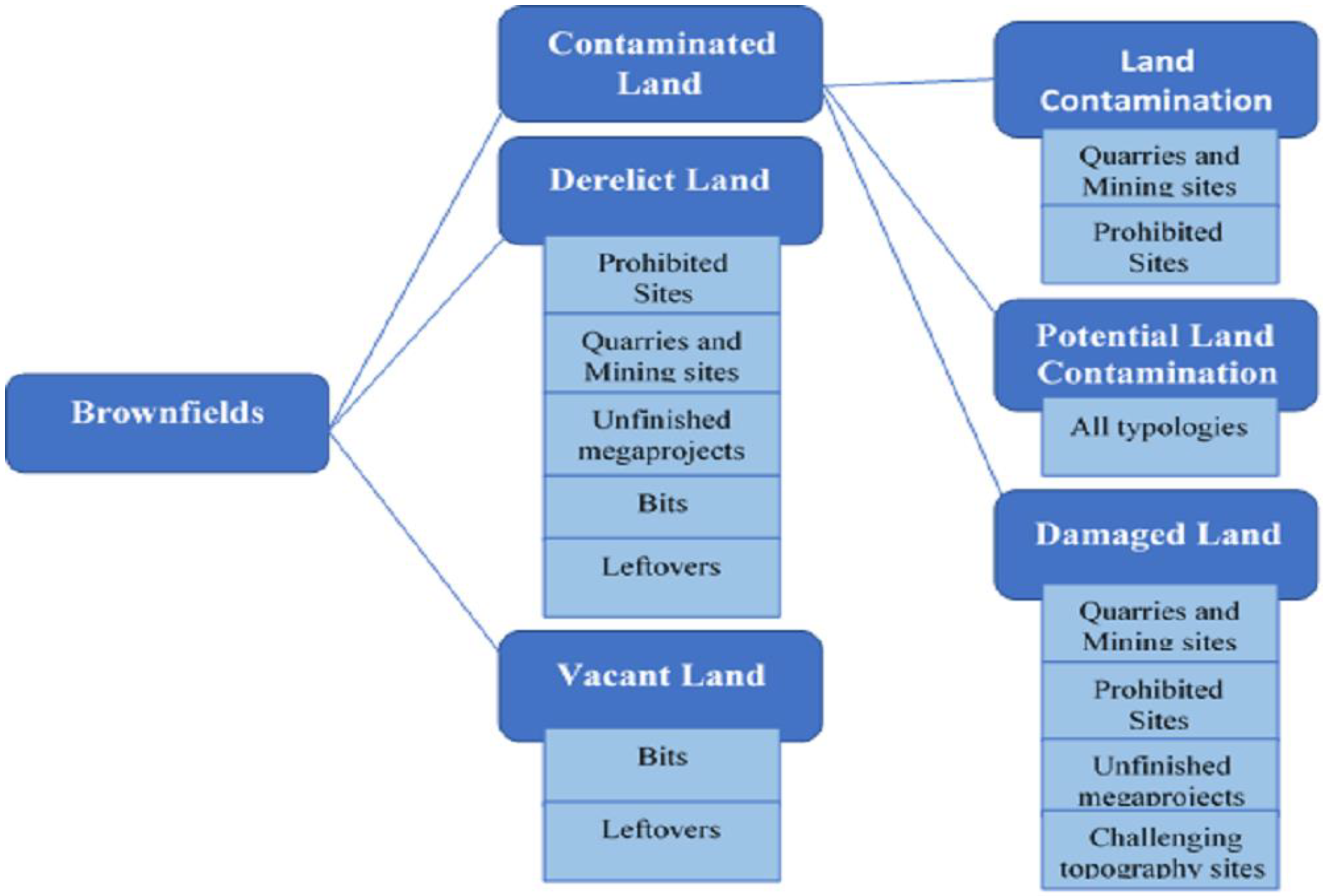Development of a Standard Brownfield Definition, Guidelines, and Evaluation Index System for Brownfield Redevelopment in Developing Countries: The Case of Pakistan
Abstract
1. Introduction
- To develop a pioneer brownfield definition in the Pakistani context
- To develop guidelines for brownfield redevelopment implementation
- To develop an index system to evaluate brownfield redevelopment in Pakistan using a hybrid approach of GRA and TFNs.
2. Literature Review
2.1. Theoretical Framework
2.1.1. Government Bodies
2.1.2. Investors and Developers
2.1.3. Communities
2.1.4. Non-Governmental Organizations (NGOs)
2.2. Brownfield Redevelopment
2.3. Overview of Brownfield Definition
2.4. Assessing Brownfield Redevelopment through GRA and TFNs
3. Methodology
3.1. Research Methodology
3.2. Solution Methodology for the Evaluation Index System
3.2.1. The Basic Definition of TFNs
- (1)
- Summation Operation
- (2)
- Product Operation:
- (3)
- Reciprocal Operation:
3.2.2. Sorting of TFNs
3.2.3. Combining GRA and TFN
3.2.4. Establishment of an Index System to Evaluate BR
4. Results and Discussion
4.1. Developing a Brownfield Definition
“Brownfield land is infilled sites that generally exist in urban centers, where remedial activities are required before development; it may be:
- (1)
- (2)
- (3)
4.2. Proposed Guidelines
- As this study developed a consensus-based brownfield definition in the Pakistani context, the proposed definition needs wide acceptance from relevant local, provincial, and federal authorities. Moreover, initiatives should be taken to include the established definition in the national legislation to promote its standard use across the country [64].
- An established evaluation index should be incorporated to evaluate BR. Due to the complex nature of the BR process, this index can be used to evaluate different alternatives regarding the redevelopment of brownfield. This indexing system integrated ecological, social, political, economic, recreational, accessibility, and brownfield site-based indicators. Therefore, this index system needs to be evaluated for different kinds of brownfield, e.g., urban, railway, mining, and coastal.
- Most of the stakeholders indicated of the need for a brownfield database. Therefore, this research recommends developing a brownfield database to foster brownfield redevelopment in Pakistan. However, there should be special consideration of different aspects regarding a brownfield database, which include: the location of brownfield, connected public infrastructure, previous use, nature of hazardous substances or pollutants at brownfield sites, the proposed plan, the estimated cost of remediation, and geotechnical conditions. The details about the need for a brownfield database are shown in Figure 6.
- Regarding the question of the benefits associated with brownfield redevelopment, the majority of stakeholders mentioned environmental benefits, as brownfield redevelopment decreases pollution and improves the environment. Therefore, considering the alarming situation of brownfield in Pakistan, brownfield redevelopment should be implemented to get rid of environmental pollution in city centers. The stakeholders’ responses regarding the benefits of brownfield redevelopment are shown in Figure 7.
- In response to the question about responsible authorities regarding brownfield redevelopment, most of the stakeholders considered the Environmental Protection Agency and local government as responsible authorities to promote brownfield redevelopment in Pakistan. These institutes also need cooperation from other supportive institutes including urban planning institutes, planning and development departments, sustainable land management programs, and land record authorities. Stakeholders’ responses regarding the responsible authorities to deal with brownfield issues are shown in Figure 8.
- Local and federal authorities should collaborate to develop policy on the successful implementation of brownfield redevelopment. In the case of cities, local municipalities should create sub-units to control brownfield issues effectively [65]. Communities have the most significant role in the brownfield redevelopment process as they are the ultimate users. Awareness-based seminars and campaigns should be organized to foster public participation in the brownfield redevelopment process [66].
4.3. Application of Established Brownfield Redevelopment Evaluation Index through an Illustrative Example
5. Conclusions
Author Contributions
Funding
Acknowledgments
Conflicts of Interest
References
- Chen, Y.; Hipel, K.W.; Kilgour, D.M.; Zhu, Y. A strategic classification support system for brownfield redevelopment. Environ. Model. Softw. 2009, 24, 647–654. [Google Scholar] [CrossRef]
- Filip, S.; Cocean, P. Urban industrial brownfields: Constraints and opportunities in Romania. Carpathian J. Earth Environ. Sci. 2012, 7, 155–164. [Google Scholar]
- De Sousa, C. Brownfield redevelopment versus greenfield development: A private sector perspective on the costs and risks associated with brownfield redevelopment in the Greater Toronto Area. J. Environ. Plan. Manag. 2000, 43, 831–853. [Google Scholar] [CrossRef]
- Dasgupta, S.; Tam, E.K.L. Environmental review: A comprehensive review of existing classification systems of brownfield sites. Environ. Pract. 2009, 11, 285–300. [Google Scholar] [CrossRef]
- U.S Central Intelligence Agency. The World Factbook 2016; Central Intelligence Agency: Washington, DC, USA, 2016.
- United Nations. Sustainable Development Knowledge Platform. Available online: https://sustainabledevelopment.un.org/sdgs (accessed on 20 March 2018).
- Kiani, K. Sustainable Development: How Far Has Pakistan Come and How Far Do We Have to Go? Available online: https://www.dawn.com/news/1360165 (accessed on 10 July 2018).
- Franz, M.; Pahlen, G.; Nathanail, P.; Okuniek, N.; Koj, A. Sustainable development and brownfield regeneration. What defines the quality of derelict land recycling? Environ. Sci. 2006, 3, 135–151. [Google Scholar] [CrossRef]
- Pakistan Environmental Protection Agency. Acts, Ordinances, Rules and Regulations; Pakistan Environmental Protection Agency: Islamabad, Pakistan, 2016.
- Alker, S.; Joy, V.; Roberts, P.; Smith, N. The definition of brownfield. J. Environ. Plan. Manag. 2000, 43, 49–69. [Google Scholar] [CrossRef]
- Zhang, L.; Geng, Y.; Dong, H.; Zhong, Y.; Fujita, T.; Xue, B.; Park, H.-S. Emergy-based assessment on the brownfield redevelopment of one old industrial area: A case of Tiexi in China. J. Clean. Prod. 2016, 114, 150–159. [Google Scholar] [CrossRef]
- Lesage, P.; Ekvall, T.; Deschênes, L.; Samoson, R. Environmental assessment of brownfield rehabilitation using two different life cycle inventory models. Int. J. Life Cycle Assess. 2007, 12, 497. [Google Scholar]
- Wedding, G.C.; Crawford-Brown, D. Measuring site-level success in brownfield redevelopments: A focus on sustainability and green building. J. Environ. Manag. 2007, 85, 483–495. [Google Scholar] [CrossRef] [PubMed]
- Wu, H.; Tiwari, P.; Han, S.S.; Chan, T.-K. Brownfield risk communication and evaluation. J. Prop. Res. 2017, 34, 233–250. [Google Scholar] [CrossRef]
- Wang, Q.; Hipel, K.W.; Kilgour, D.M. Fuzzy real options in brownfield redevelopment evaluation. Adv. Decis. Sci. 2009, 2009. [Google Scholar] [CrossRef]
- Morio, M.; Schädler, S.; Finkel, M. Applying a multi-criteria genetic algorithm framework for brownfield reuse optimization: Improving redevelopment options based on stakeholder preferences. J. Environ. Manag. 2013, 130, 331–346. [Google Scholar] [CrossRef] [PubMed]
- Guo, P.; Liang, Y.-H.; Zhu, Y.-M. Multi-hierarchical Grey Evaluation of the Brownfield Redevelopment Project Based on Combinational Weight. Oper. Res. Manag. Sci. 2010, 5, 023. [Google Scholar]
- BenDor, T.K.; Metcalf, S.S.; Paich, M. The dynamics of brownfield redevelopment. Sustainability 2011, 3, 914–936. [Google Scholar] [CrossRef]
- Doick, K.; Sellers, G.; Castan-Broto, V.; Silverthorne, T. Understanding success in the context of brownfield greening projects: The requirement for outcome evaluation in urban greenspace success assessment. Urban For. Urban Green. 2009, 8, 163–178. [Google Scholar] [CrossRef]
- Chrysochoou, M.; Brown, K.; Dahal, G.; Granda-Carvajal, C.; Segerson, K.; Garrick, N.; Bagtzoglou, A. A GIS and indexing scheme to screen brownfields for area-wide redevelopment planning. Landsc. Urban Plan. 2012, 105, 187–198. [Google Scholar] [CrossRef]
- Schädler, S.; Finkel, M.; Bleicher, A.; Morio, M.; Gross, M. Spatially explicit computation of sustainability indicator values for the automated assessment of land-use options. Landsc. Urban Plan. 2013, 111, 34–45. [Google Scholar] [CrossRef]
- Wang, B.; Ke, R.-Y.; Yuan, X.-C.; Wei, Y.-M. China’s regional assessment of renewable energy vulnerability to climate change. Renew. Sustain. Energy Rev. 2014, 40, 185–195. [Google Scholar] [CrossRef]
- Hou, D.; Al-Tabbaa, A.; Chen, H.; Mamic, I. Factor analysis and structural equation modelling of sustainable behaviour in contaminated land remediation. J. Clean. Prod. 2014, 84, 439–449. [Google Scholar] [CrossRef]
- Zhu, Y.; Hipel, K.W.; Ke, G.Y.; Chen, Y. Establishment and optimization of an evaluation index system for brownfield redevelopment projects: An empirical study. Environ. Model. Softw. 2015, 74, 173–182. [Google Scholar] [CrossRef]
- Zhu, Y.; Hipel, K.W.; Peng, G. A research framework for tackling brownfield problems in China using project management theory. In Proceedings of the 2008 IEEE International Conference on Systems, Man and Cybernetics, Singapore, 12–15 October 2008; pp. 3298–3303. [Google Scholar]
- Dixon, T. Integrating sustainability into brownfield regeneration: Rhetoric or reality?—An analysis of the UK development industry. J. Prop. Res. 2006, 23, 237–267. [Google Scholar] [CrossRef]
- Loures, L.; Vaz, E. Exploring expert perception towards brownfield redevelopment benefits according to their typology. Habitat Int. 2016, 72, 66–76. [Google Scholar] [CrossRef]
- De Sousa, C.A. Turning brownfields into green space in the City of Toronto. Landsc. Urban Plan. 2003, 62, 181–198. [Google Scholar] [CrossRef]
- Wang, L.; Fang, L.; Hipel, K.W. Negotiation over costs and benefits in brownfield redevelopment. Group Decis. Negot. 2011, 20, 509–524. [Google Scholar] [CrossRef]
- Loures, L. Post-industrial landscapes as drivers for urban redevelopment: Public versus expert perspectives towards the benefits and barriers of the reuse of post-industrial sites in urban areas. Habitat Int. 2015, 45, 72–81. [Google Scholar] [CrossRef]
- Rizzo, E.; Pesce, M.; Pizzol, L.; Alexandrescu, F.M.; Giubilato, E.; Critto, A.; Marcomini, A.; Bartke, S. Brownfield regeneration in Europe: Identifying stakeholder perceptions, concerns, attitudes and information needs. Land Use Policy 2015, 48, 437–453. [Google Scholar] [CrossRef]
- Loures, L.; Panagopoulos, T.; Burley, J.B. Assessing user preferences on post-industrial redevelopment. Environ. Plan. B Plan. Des. 2016, 43, 871–892. [Google Scholar] [CrossRef]
- Tyman, S.K. Gunpowder Park: A Case Study of Post-Industrial Reinhabitation. Ph.D. Thesis, University of Oregon, Eugene, OR, USA, 2008. [Google Scholar]
- USEPA (United States Environmental Protection Agency). Available online: https://www.epa.gov/brownfields/overview-epas-brownfields-program (accessed on 23 March 2018).
- De Sousa, C.A. Brownfield redevelopment in Toronto: An examination of past trends and future prospects. Land Use Policy 2002, 19, 297–309. [Google Scholar] [CrossRef]
- Ferber, U.; Grimski, D.; Millar, K.; Nathanail, P. Sustainable Brownfield Regeneration: CABERNET Network Report; The Concerted Action on Brownfield and Economic Regeneration Network (CABERNET); CABERNET: Nottingham, UK, 2006. [Google Scholar]
- CABERNET. Glossary of Terms for Holistic Management of Brownfield Regeneration. Available online: https://www.cen.eu/work/areas/env/Pages/WS-74.aspx (accessed on 20 March 2018).
- POST. A Brown and Pleasant Land; POST: London, UK, 1998. [Google Scholar]
- Darmendrail, D. Pollution des Sols: Basol. 1999. Available online: http://basol.developpement-durable.gouv.fr/faq.htm#q9 (accessed on 20 March 2018).
- Freier, K. CLARINET Working Group 1: Brownfield Redevelopment Workplan; German Environmental Agency: Berlin, Germany, 1998. [Google Scholar]
- Newton, P.W.J.B.E. Beyond greenfield and brownfield: The challenge of regenerating Australia’s greyfield suburbs. Built Environ. 2010, 36, 81–104. [Google Scholar] [CrossRef]
- Potts, L.; Cloete, C.E. Developing guidelines for brownfield development in South Africa. WIT Trans. Ecol. Environ. 2012, 162, 389–399. [Google Scholar]
- Ekman, E.W. Strategies for Reclaiming Urban Postindustrial Landscapes. Ph.D. Thesis, Massachusetts Institute of Technology, Cambridge, MA, USA, 2004. [Google Scholar]
- Franz, M.; Güles, O.; Prey, G. Place-Making and ‘Green’ Reuses of Brownfields in the Ruhr. Tijdschr. Voor Econ. Soc. Geogr. 2008, 99, 316–328. [Google Scholar] [CrossRef]
- Tarawneh, D. Brownfield landscapes of Amman: Defining typologies of unnamed terrains. Transform. Urban Character Arab. Cities Since Late Last Century 2015, 90, 90. [Google Scholar]
- Loures, L. Planning and Design in Postindustrial Land Transformation: East bank Arade River, Lagoa—Case Study. Ph.D. Thesis, University of Algarve, Faro, Portugal, 2011. [Google Scholar]
- Zavadskas, E.K.; Turskis, Z.; Tamošaitiené, J.; Marina, V. Multicriteria selection of project managers by applying grey criteria. Technol. Econ. Dev. Econ. 2008, 14, 462–477. [Google Scholar] [CrossRef]
- De, P.; Rawat, A. A fuzzy inventory model without shortages using triangular fuzzy number. Fuzzy Inf. Eng. 2011, 3, 59–68. [Google Scholar] [CrossRef]
- Chang, C.-L.; Wei, C.-C.; Lee, Y.-H. Failure mode and effects analysis using fuzzy method and grey theory. Kybernetes 1999, 28, 1072–1080. [Google Scholar] [CrossRef]
- NLUD-PDL. Previously-Developed Land that May Be Available for Development. Available online: https://www.gov.uk/government/statistics/national-land-use-database-of-previously-developed-land-2012-nlud-pdl (accessed on 15 February 2018).
- NRTEE. State of the Debate. Environmental Quality in Canadian Cities: The Federal Role. Available online: http://webdocs.edmonton.ca/InfraPlan/Infra/Reports/environmental%20cdn_cities_execsummarry.pdf (accessed on 15 February 2018).
- Bacot, H.; O’Dell, C. Establishing indicators to evaluate brownfield redevelopment. Econ. Dev. Q. 2006, 20, 142–161. [Google Scholar] [CrossRef]
- Pediaditi, K.; Wehrmeyer, W.; Chenoweth, J. Sustainability Evaluation for Brownfield Redevelopment. In Proceedings of the Institution of Civil Engineers—Engineering Sustainability; Thomas Telford Ltd.: London, UK, 2006; pp. 3–10. [Google Scholar]
- Alexandrescu, F.M.; Pizzol, L.; Zabeo, A.; Rizzo, E.; Giubilato, E.; Critto, A. Identifying sustainability communicators in urban regeneration: Integrating individual and relational attributes. J. Clean. Prod. 2016, 173, 278–291. [Google Scholar] [CrossRef]
- Laprise, M.; Lufkin, S.; Rey, E. An operational monitoring tool facilitating the transformation of urban brownfields into sustainable neighborhoods. Build. Environ. 2018, 142, 221–233. [Google Scholar] [CrossRef]
- Laprise, M.; Lufkin, S.; Rey, E. An indicator system for the assessment of sustainability integrated into the project dynamics of regeneration of disused urban areas. Build. Environ. 2015, 86, 29–38. [Google Scholar] [CrossRef]
- Limasset, E.; Pizzol, L.; Merly, C.; Gatchett, A.M.; Le Guern, C.; Martinát, S.; Klusáček, P.; Bartke, S. Points of attention in designing tools for regional brownfield prioritization. Sci. Total Environ. 2018, 622, 997–1008. [Google Scholar] [CrossRef] [PubMed]
- Pizzol, L.; Zabeo, A.; Klusáček, P.; Giubilato, E.; Critto, A.; Frantal, B.; Martinát, S.; Kunc, J.; Osman, R.; Bartke, S. Timbre Brownfield Prioritization Tool to support effective brownfield regeneration. J. Environ. Manag. 2016, 166, 178–192. [Google Scholar] [CrossRef] [PubMed]
- Yan, W.; Zhu, Y.; Ahmad, N. Theory of Inventive Problem Solving (TRIZ) based contradiction resolution strategies for Shaanxi Aviation Industrial Upgrading. In Proceedings of the 2016 IEEE International Conference on Industrial Engineering and Engineering Management (IEEM), Bali, Indonesia, 4–7 December 2016; pp. 1111–1115. [Google Scholar]
- Lee, E.; Li, R.-J. Comparison of fuzzy numbers based on the probability measure of fuzzy events. Comput. Math. Appl. 1988, 15, 887–896. [Google Scholar] [CrossRef]
- Deng, J. Grey System Theory and Applications; Geo-Li Publishing Co.: Taipei, Taiwan, 2000. [Google Scholar]
- Rui, M.; Jiatai, Z. Research of hierarchy synthetic evaluation based on grey relational analysis. Syst. Eng. Theory Pract. 2008, 10, 019. [Google Scholar]
- Rui, M.; Jiatai, Z. Research of hierarchy synthetic evaluation based on grey relational analysis. In Proceedings of the 2007 IEEE International Conference on Grey Systems and Intelligent Services, Nanjing, China, 18–20 November 2007; pp. 90–94. [Google Scholar]
- Altherr, W.; Blumer, D.; Oldörp, H.; Nagel, P. How do stakeholders and legislation influence the allocation of green space on brownfield redevelopment projects? Five case studies from Switzerland, Germany and the UK. Bus. Strategy Environ. 2007, 16, 512–522. [Google Scholar] [CrossRef]
- Novosák, J.; Hájek, O.; Nekolová, J.; Bednář, P. The spatial pattern of brownfields and characteristics of redeveloped sites in the Ostrava metropolitan area (Czech Republic). Morav. Geogr. Rep. 2013, 21, 36–45. [Google Scholar] [CrossRef]
- Solitare, L. Prerequisite conditions for meaningful participation in brownfields redevelopment. J. Environ. Plan. Manag. 2005, 48, 917–935. [Google Scholar] [CrossRef]
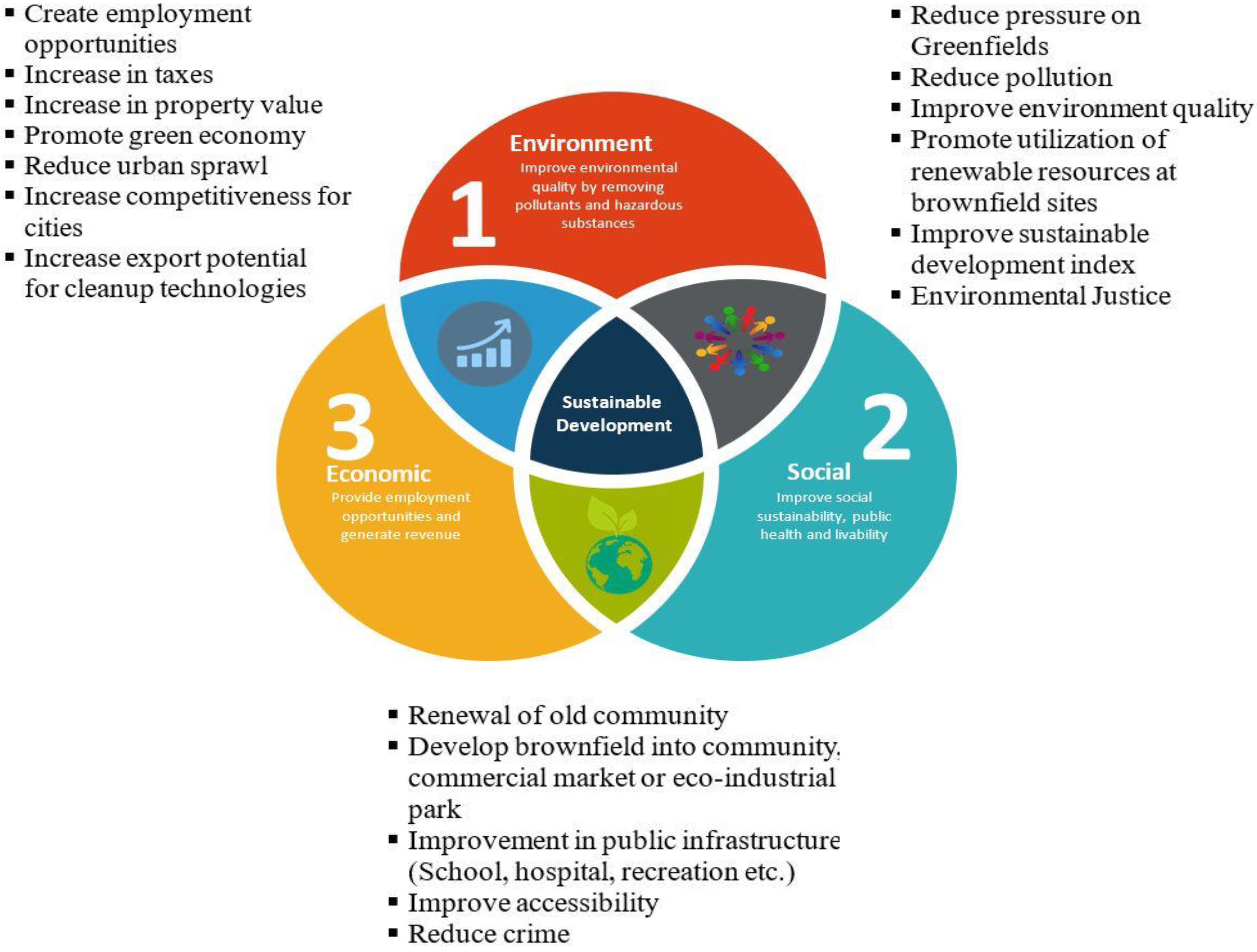
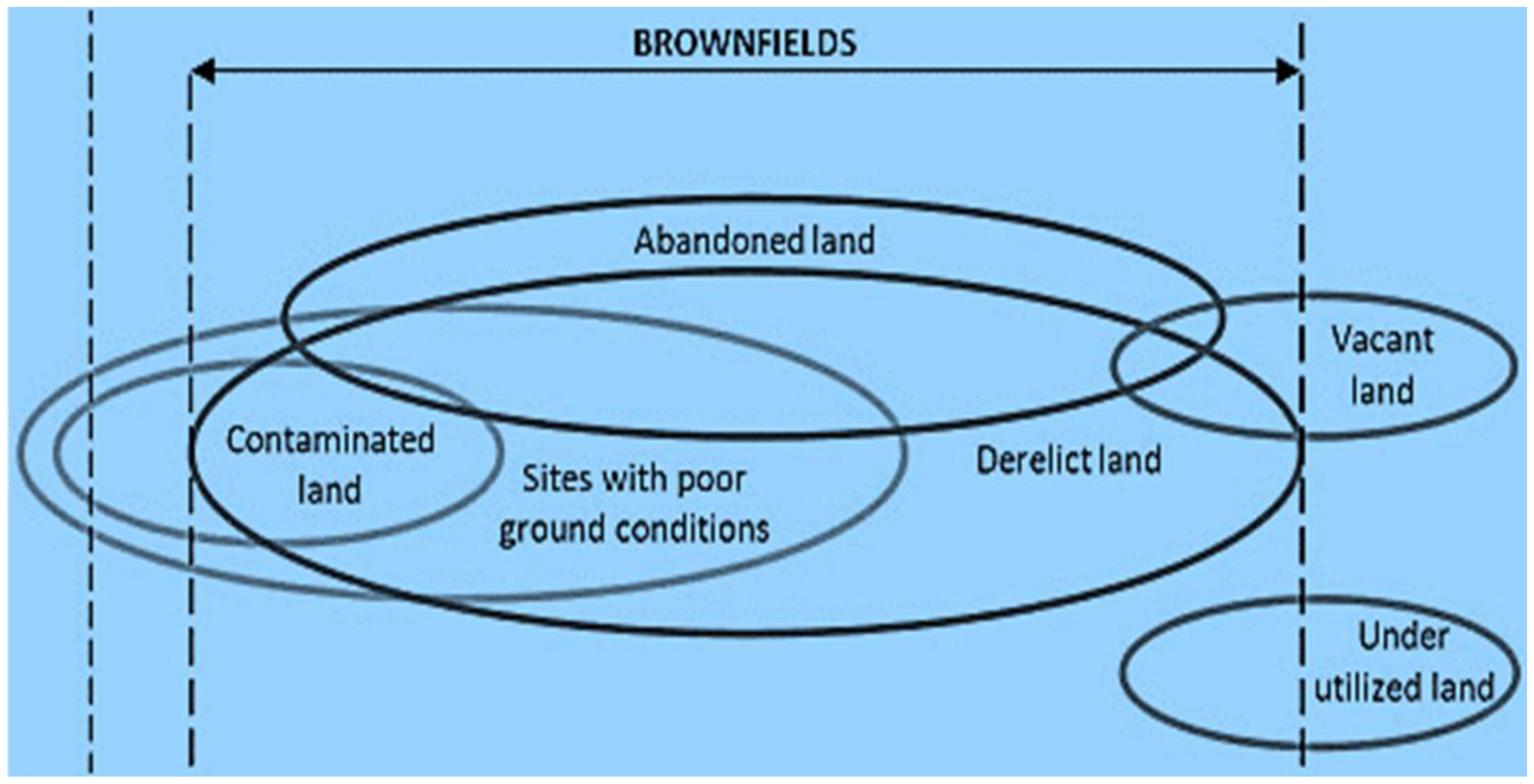
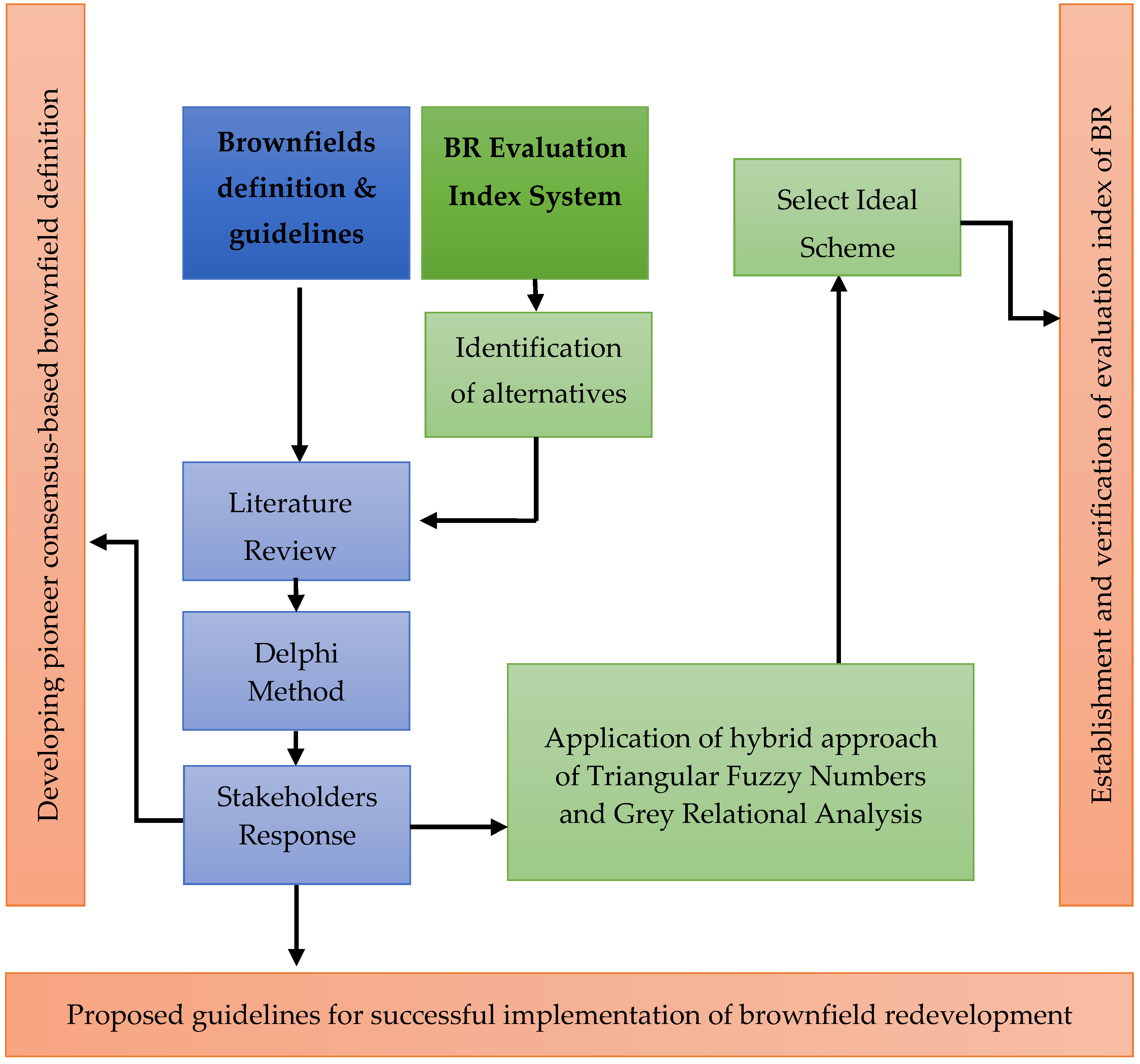

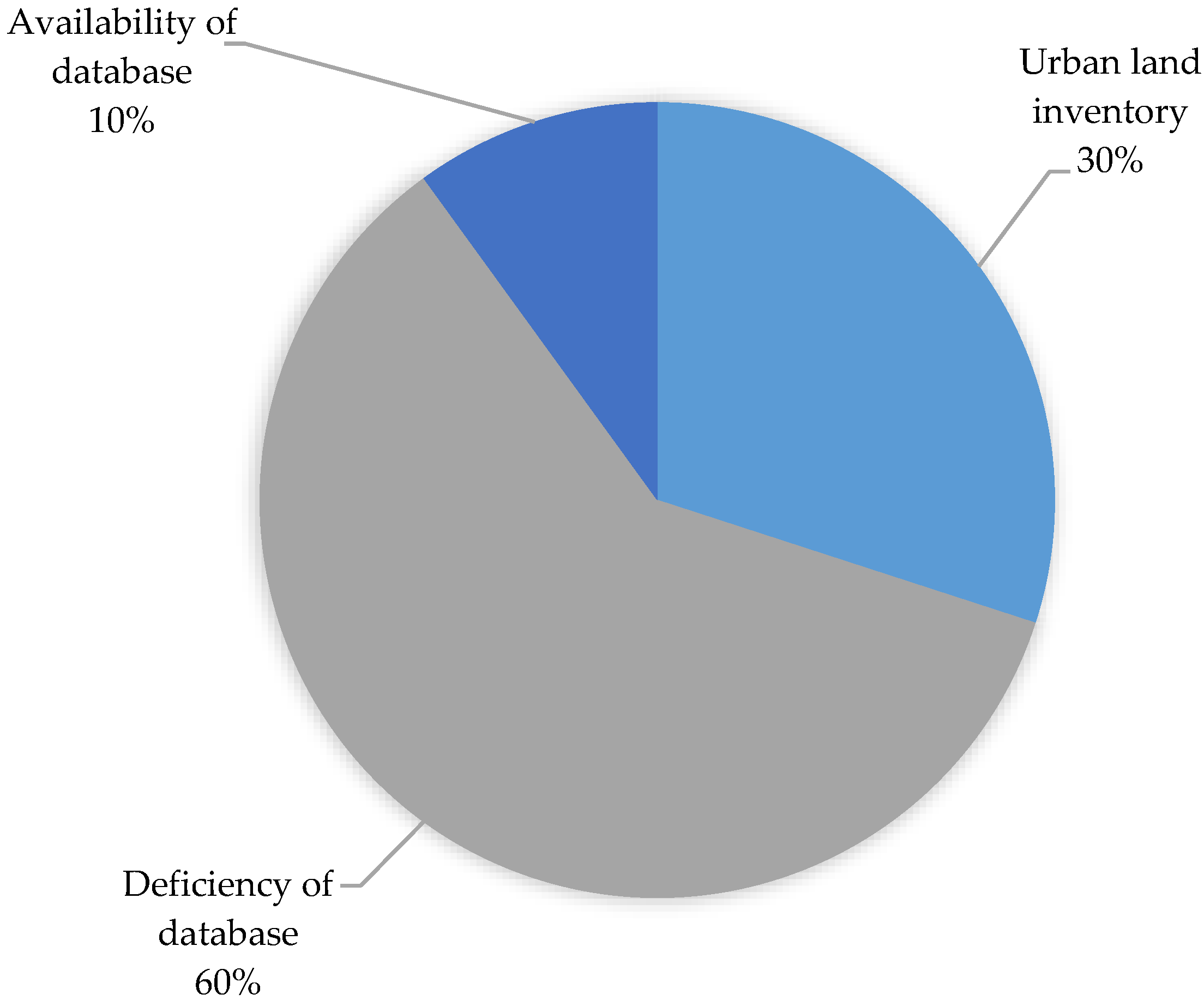
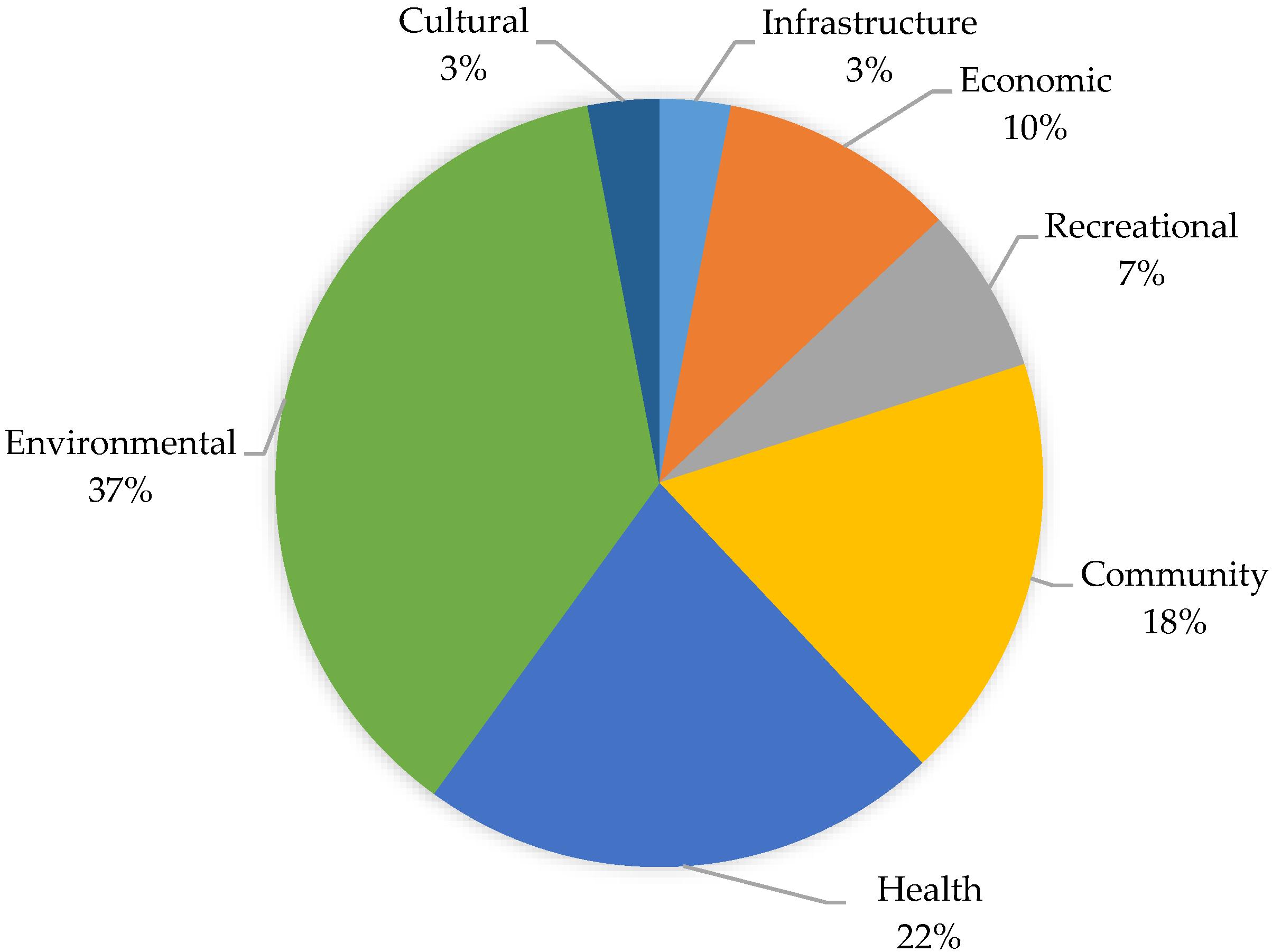
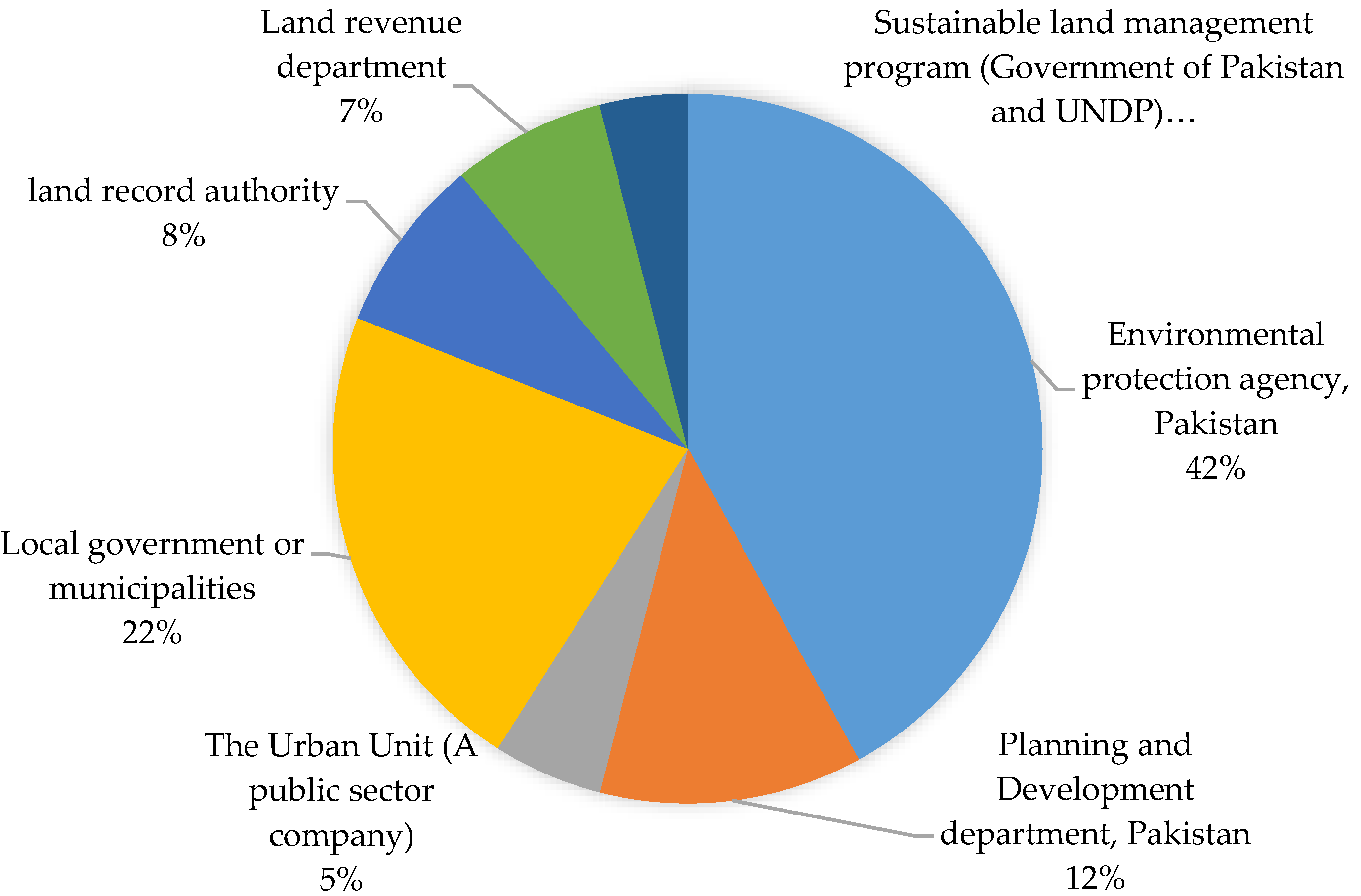
| (NRTEE, 2003) | Urban Mines Limited, (Alker et al., 2000) | (POST, 1998) | (NLUD-PDL, 2007) |
|---|---|---|---|
| 1. Abandoned commercial land with known pollutants | 1. Vacant, available for immediate use | 1. Contaminated sites | 1. Previously developed land but now vacant |
| 2. Abandoned industrial land with known pollutants | 2. Vacant, partially occupied or utilized, available for immediate use | ||
| 3. Abandoned commercial land with suspected pollutants | 3. Vacant, requiring intervention | ||
| 4. Abandoned industrial land with suspected pollutants | 4. Derelict, requiring intervention | 2. Vacant buildings | |
| 5. Contaminated, requiring intervention | 2. Derelict sites | ||
| 5. Idle commercial land with known pollutants | 6. Vacant and derelict, requiring intervention | ||
| 6. Idle industrial land with known contaminant | 7. Vacant and contaminated, requiring intervention | ||
| 7. Idle commercial land with suspected pollutants | 8. Vacant, derelict and contaminated, requiring intervention | 3. Sites with poor ground condition | 3. Derelict land and buildings |
| 9. Derelict and contaminated, requiring intervention | |||
| 8. Idle industrial land with suspected pollutants | 10. Vacant, partially occupied or utilized, requiring intervention | ||
| 9. Underused commercial land with known pollutants | 11. Derelict, partially occupied or utilized, requiring intervention | 4. Underutilized sites | 4. Land or buildings currently in use and allocated in local plan |
| 10. Underused industrial land with known pollutants | 12. Contaminated, partially occupied or utilized, requiring intervention | ||
| 11. Underused commercial land with Suspected pollutants | 13. Vacant and derelict, partially occupied or utilized, requiring intervention | ||
| 14. Vacant and contaminated, partially occupied or utilized, requiring intervention | 5. Vacant sites | ||
| 12. Underused industrial land with suspected pollutants | 15. Vacant, derelict and contaminated, partially occupied or utilized, requiring intervention | 5. Land or building currently in use with known potential for redevelopment | |
| 16. Derelict and contaminated, partially occupied or utilized, requiring intervention |
| Country | Source | Definition |
|---|---|---|
| USA | USEPA [34] | “Abandoned, idled, or under-used industrial and commercial facilities where expansion or redevelopment is complicated by real or perceived environmental contamination.” |
| Canada | De Sousa [35] | “Abandoned, idle or underused commercial or industrial sites where previous activities have caused environmental contamination, but where there is an active potential for redevelopment.” |
| Europe | Ferber et al. [36] | “Currently derelict or underused sites which have been affected by former uses of the site or surrounding land; they are mainly located in fully or partly developed urban areas and may have real or perceived contamination problems thus require intervention to bring them back to beneficial use.” |
| Cabernet [37] | “A site that has been affected by former uses of the site or surrounding land, is derelict or underused, mainly in fully or partly developed urban areas, require intervention to bring it back to beneficial use; and may have real or perceived contamination problems.” | |
| UK | Post [38] | “Brownfield sites are buildings and land either now vacant, or that could become vacant or suitable for development, during a relevant [development]plan period.” |
| France | Darmendrail [39] | “A space that has been temporarily abandoned following the cessation of activity (agricultural, protoindustrial, service, processing, military defense, storage or transport) and that needs to be reclaimed for future use.” |
| Germany | Freier [40] | “Abandoned pieces of land, mainly in inner cities, which are often blocked for economic development due to their ecological and economic risks.” |
| Australia | Newton [41] | “A brownfield site is one which has been urbanized or used industrially, subsequently vacated and available for re-urbanization.” |
| South Africa | Potts and Cloete [42] | “A brownfield site is infill land or premises where remedial action is required before redevelopment. It may also be vacant, derelict or contaminated. No specific land use is attributed.” |
| Linguistic Terms | Abbreviation | TFNs |
|---|---|---|
| Strongly Disagree | SD | (0,1,2) |
| Disagree | DA | (2,3,4) |
| Neither Disagree nor Disagree/Neutral | NE | (4,5,6) |
| Agree | AG | (6,7,8) |
| Strongly Agree | SA | (8,9,10) |
| Comprehensive Evaluation Index System | Fuzzy Index | Corresponding TFNs | ||||||
|---|---|---|---|---|---|---|---|---|
| Main Index | Code | Sub-Index | S1 | S2 | S3 | S1 | S2 | S3 |
| Ecological Benefits | EB1 | Improve water quality | AG | SD | AG | (6,7,8) | (0,1,2) | (6,7,8) |
| EB2 | Improve soil quality | SA | DA | AG | (8,9,10) | (2,3,4) | (0,1,2) | |
| EB3 | Promote conservation of natural resources | AG | DA | SD | (6,7,8) | (2,3,4) | (0,1,2) | |
| EB4 | Improve the use of renewable energy resources | DA | AG | DA | (2,3,4) | (6,7,8) | (2,3,4) | |
| Health Benefits | HB1 | Public health quality improvement | SA | AG | DA | (8,9,10) | (6,7,8) | (2,3,4) |
| HB2 | Reduce stress | AG | AG | SD | (6,7,8) | (6,7,8) | (0,1,2) | |
| HB3 | Increase opportunities for physical activities | AG | AG | SD | (6,7,8) | (6,7,8) | (0,1,2) | |
| Financial & Economics benefits | FEB1 | Increase in nearby properties value | NE | DA | SA | (4,5,6) | (2,3,4) | (8,9,10) |
| FEB2 | Enhancement of new economic activities | SA | DA | SA | (8,9,10) | (2,3,4) | (8,9,10) | |
| FEB3 | Net present value (NPV) | AG | AG | AG | (6,7,8) | (6,7,8) | (6,7,8) | |
| FEB4 | Return on investment (ROI) | AG | AG | DA | (6,7,8) | (6,7,8) | (2,3,4) | |
| FEB5 | Increase in tax collection | DA | AG | SA | (2,3,4) | (6,7,8) | (8,9,10) | |
| Location & Accessibility | LA1 | Geographical location of brownfield | SA | SD | DA | (8,9,10) | (0,1,2) | (2,3,4) |
| LA2 | Size of brownfield | AG | SD | AG | (8,9,10) | (0,1,2) | (6,7,8) | |
| LA3 | Accessibility to basic facilities | SA | SA | AG | (8,9,10) | (8,9,10) | (6,7,8) | |
| Social & Recreational Benefits | SR1 | Decrease in crime frequency | SA | DA | DA | (8,9,10) | (2,3,4) | (2,3,4) |
| SR2 | Enhancement of hobbies and leisure | SA | AG | SD | (8,9,10) | (6,7,8) | (0,1,2) | |
| SR3 | Encourage educational activities | AG | SD | SD | (6,7,8) | (0,1,2) | (0,1,2) | |
| Technical and Public Benefits | TP1 | Reduce impact from hazardous substances in surroundings | DA | AG | AG | (2,3,4) | (6,7,8) | (6,7,8) |
| TP2 | Investment interest in brownfield | SA | DA | DA | (8,9,10) | (2,3,4) | (2,3,4) | |
| TP3 | Satisfaction of investment in brownfield redevelopment | SA | DA | DA | (8,9,10) | (2,3,4) | (2,3,4) | |
| Brownfield Redevelopment Performance | BP1 | Redevelopment is matching with municipal planning | AG | DA | AG | (6,7,8) | (2,3,4) | (6,7,8) |
| BP2 | Improvement in community and government image | NE | AG | DA | (4,5,6) | (6,7,8) | (2,3,4) | |
| Code | Reference Sequence | Dimensionless Values | Fuzzy Grey Relational Coefficients | |||||
|---|---|---|---|---|---|---|---|---|
| S1 | S2 | S3 | S1 | S2 | S3 | |||
| EB1 | (8,9,10) | (0.85,1.07,1.39) | (0.66,0.75,1.11) | (0.66,0.75,1.11) | (0.66,0.75,1.11) | (0.42,1.45,2.34) | (0.42,1.45,2.34) | (0.42,1.45, 2.34) |
| EB2 | (8,9,10) | (0.00,1.17,1.42) | (0.44,0.55,0.77) | (0.84, 0.66,2.5) | (0.44,0.55,0.77) | (0.28,0.68,0.38) | (1.59,0.42,0.89) | (0.24,0.84,2.87) |
| EB3 | (6,7,8) | (0.00,0.65,2.63) | (0.72,1.55,5.67) | (0.44,0.55,0.77) | (0.72,1.55,5.26) | (0.27,1.00,0.50) | (0.28,1.48,0.23) | (0.23,1.00,0.50) |
| EB4 | (6,7,8) | (0.00,0.58,1.37) | (0.84,0.66,2.52) | (0.72,1.55,5.76) | (0.84, 0.66,2.52) | (0.25,0.66,2.83) | (0.22,0.99,3.99) | (0.28,0.93,3.23) |
| HB1 | (8,9,10) | (0.85,1.07,1.31) | (0.00,0.66,2.52) | (0.84,0.66,2.52) | (0.00,0.66,2.52) | (0.26,0.60,1.47) | (0.23,1.00,.505) | (0.21,0.61,2.30) |
| HB2 | (6,7,8) | (0.91,1.15,1.37) | (0.48,0.77,0.98) | (0.00,0.66,2.52) | (0.48,0.77,0.98) | (0.23,1.00,0.50) | (0.23,0.46,2.43) | (0.09,0.23,1.17) |
| HB3 | (8,9,10) | (0.72,1.67,2.52) | (0.44,0.55,0.77) | (0.44,0.55,0.77) | (0.44,0.55,0.77) | (0.27,0.33,2.32) | (0.23,1.00,.505) | (0.23,1.00,0.50) |
| FEB1 | (4,5,6) | (0.00,1.17,1.46) | (0.57,2.45,1.23) | (0.48,0.77,0.98) | (0.57,2.45,1.23) | (1.59,0.42,0.89) | (0.28,1.48,0.23) | (0.22,0.67,1.79) |
| FEB2 | (8,9,10) | (0.72,1.66,2.52) | (0.44,0.55,0.77) | (0.44,0.55,0.77) | (0.44,0.55,0.77) | (0.24,0.84,2.87) | (0.20,0.78,3.12) | (0.26,0.60,1.47) |
| FEB3 | (0,1,2) | (0.85,1.07,1.32) | (0.66,0.75,1.11) | (0.57,2.45,1.23) | (0.66,0.75,1.11) | (0.23,1.00,0.50) | (0.27,0.59,2.89) | (0.23,1.00,0.50) |
| FEB4 | (6,7,8) | (0.00,0.65,2.64) | (0.46,0.74,0.98) | (0.44,0.55,0.77) | (0.46,0.74,0.98) | (0.21,0.82,2.71) | (0.65,0.79,3.61) | (0.28,0.93,3.23) |
| FEB5 | (2,3,4) | (0.85,1.07,1.39) | (1.08,1.38,1.14) | (0.66,0.75,1.11) | (1.08,1.38,1.14) | (0.76,0.92,0.98) | (0.23,1.00,.505) | (0.22,0.99,3.99) |
| LA1 | (4,5,6) | (0.00,1.17,1.49) | (1.34,0.88,1.11) | (0.46,0.74,0.98) | (1.34, 0.88,1.11) | (0.28,0.27,0.27) | (0.22,0.19,5.23) | (0.09,0.23,1.17) |
| LA2 | (6,7,8) | (0.00,0.58,1.37) | (0.44,0.55,0.77) | (1.08,1.38,1.14) | (0.44,0.55,0.77) | (0.23,1.00,0.50) | (0.27,0.92,1.62) | (0.21,0.61,2.30) |
| LA3 | (8,9,10) | (0.91,1.15,1.37) | (0.84,0.66,2.51) | (1.34,0.88,1.11) | (0.84, 0.66,2.52) | (0.28,1.48,0.23) | (0.22,0.99,3.99) | (0.28,1.48,0.23) |
| SR1 | (6,7,8) | (0.00,1.17,1.46) | (0.48,0.77,0.98) | (0.48,0.77,0.98) | (0.48,0.77,0.98) | (0.29,0.49,2.09) | (0.24,0.40,2.93) | (0.23,1.00,.505) |
| SR2 | (8,9,10) | (0.95,0.96,0.97) | (0.57,2.45,1.23) | (0.57,2.45,1.23) | (0.57,2.45,1.23) | (0.22,0.99,3.99) | (0.28,0.93,3.23) | (0.26,0.60,1.42) |
| SR3 | (6,7,8) | (0.86,1.09,1.38) | (0.66,0.75,1.11) | (0.66,0.75,1.11) | (0.66,0.75,1.11) | (0.23,1.00,0.50) | (1.59,0.42,0.89) | (0.28,1.48,0.23) |
| TP1 | (4,5,6) | (0.00,0.65,2.68) | (1.08,1.38,1.14) | (1.08,1.38,1.14) | (1.08,1.38,1.14) | (0.22,0.99,3.99) | (0.21,0.61,2.30) | (0.26,0.33,2.32) |
| TP2 | (8,9,10) | (0.91,1.15,1.37) | (0.72,1.55,5.36) | (0.72,1.55,5.27) | (0.72,1.55,5.23) | (0.28,1.48,0.23) | (0.23,1.00,0.55) | (0.09,0.23,1.17) |
| TP3 | (6,7,8,) | (0.72,1.63,2.50) | (0.00,0.66,2.52) | (0.00,0.66,2.52) | (0.00,0.66, 2.52) | (0.26,0.60,1.42) | (0.22,0.67,1.79) | (0.24,0.84,2.87) |
| BP1 | (8,9,10) | (0.85,1.07,1.39) | (0.84,0.66,2.53) | (0.84,0.66,2.52) | (0.84,0.66,2.52) | (0.27,0.79,3.72) | (0.28,1.48,0.23) | (0.28,0.68,.387) |
| BP2 | (8,9,10) | (0.00,1.17,1.46) | (0.57,2.45,1.23) | (0.57,2.45,1.23) | (0.57,2.45,1.23) | (0.28,0.45,1.77) | (159,0.42,0.89) | (0.23,1.00,0.50) |
© 2018 by the authors. Licensee MDPI, Basel, Switzerland. This article is an open access article distributed under the terms and conditions of the Creative Commons Attribution (CC BY) license (http://creativecommons.org/licenses/by/4.0/).
Share and Cite
Ahmad, N.; Zhu, Y.; Ibrahim, M.; Waqas, M.; Waheed, A. Development of a Standard Brownfield Definition, Guidelines, and Evaluation Index System for Brownfield Redevelopment in Developing Countries: The Case of Pakistan. Sustainability 2018, 10, 4347. https://doi.org/10.3390/su10124347
Ahmad N, Zhu Y, Ibrahim M, Waqas M, Waheed A. Development of a Standard Brownfield Definition, Guidelines, and Evaluation Index System for Brownfield Redevelopment in Developing Countries: The Case of Pakistan. Sustainability. 2018; 10(12):4347. https://doi.org/10.3390/su10124347
Chicago/Turabian StyleAhmad, Naveed, Yuming Zhu, Muhammad Ibrahim, Muhammad Waqas, and Abdul Waheed. 2018. "Development of a Standard Brownfield Definition, Guidelines, and Evaluation Index System for Brownfield Redevelopment in Developing Countries: The Case of Pakistan" Sustainability 10, no. 12: 4347. https://doi.org/10.3390/su10124347
APA StyleAhmad, N., Zhu, Y., Ibrahim, M., Waqas, M., & Waheed, A. (2018). Development of a Standard Brownfield Definition, Guidelines, and Evaluation Index System for Brownfield Redevelopment in Developing Countries: The Case of Pakistan. Sustainability, 10(12), 4347. https://doi.org/10.3390/su10124347






